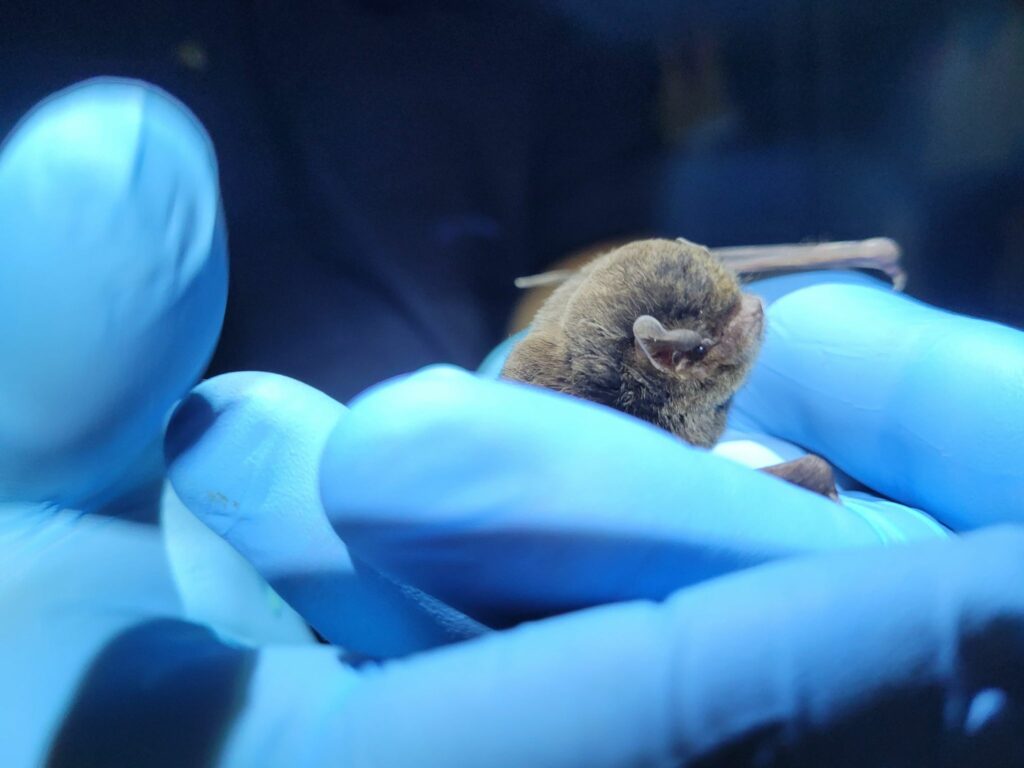Tracking Microbats with Ecological Australia
MONITORING SPECIES
Ecological Australia engaged Wildlife Drones to radio-track Microbats in Australia. As high agile creatures tracking bats on foot in challenging and rugged terrain is nearly impossible.
Working as an ecologist at Ecological Australia, Matt Elsley encountered challenges with traditional bat tracking methods. Utilizing a handheld antenna (yagi-antenna) or static tracking devices like handheld detectors limited his coverage range to approximately 200 meters on average.
This limited range made it difficult to track bats in expansive or hard-to-reach areas, such as gorges or offshore locations. Moreover, conducting tracking activities at dusk or night posed safety risks, and traversing rough terrains or accessing remote sites was time-consuming and expensive.
Matt Elsley and his team turned to Wildlife Drones’ innovative drone-based telemetry system to overcome these challenges. By leveraging drone technology, they gained a significant advantage in bat tracking operations. Drones offered the capability to fly above the landscape, providing a clear line of sight and enhancing signal detection compared to ground-based methods. This allowed them to cover larger areas efficiently, even in rugged or inaccessible terrain.
Incorporating Wildlife Drones’ technology into their bat tracking projects has empowered Ecological Australia to achieve the following:
- Increased Coverage: Drones enabled comprehensive coverage of vast areas that would have been challenging to access on foot or by boat. They could quickly identify and reach remote locations, including sea caves and ridgelines, which were previously difficult to survey.
- Improved Efficiency: With drones, Matt’s team could survey wide areas in a fraction of the time it would have taken using traditional methods. This efficiency saved valuable time and resources, allowing them to focus on data analysis and conservation efforts.
- Enhanced Safety: By minimizing the need for ground-based tracking in hazardous environments, such as rough waters or steep terrain, drones significantly reduced safety risks for field researchers.
- Cost-Effective Solutions: Utilizing drones for bat tracking proved to be a cost-effective alternative to traditional methods, eliminating expenses associated with boat rentals, travel, and labour-intensive fieldwork.
Tracking Microbats
Microbats, a fascinating group of mammals, play a crucial role in ecosystems worldwide as efficient insect predators. Despite their diminutive size, with wingspans ranging from just a few inches to about a foot, microbats are voracious hunters, consuming thousands of insects each night. Their echolocation abilities are remarkable, allowing them to navigate through the darkness with astonishing precision.
Tracking microbats presents unique challenges due to their small size, nocturnal habits, and high mobility. Researchers utilize a variety of tracking techniques, including radio telemetry, acoustic monitoring, and GPS tagging, to study their movements, foraging behaviours, and roosting preferences. Radio telemetry involves attaching miniature radio transmitters to individual bats, allowing researchers to track their movements using specialized receivers. Acoustic monitoring relies on ultrasonic detectors to record the echolocation calls of microbats, providing insights into their activity patterns and habitat use.
These tracking methods enable scientists to better understand the ecological requirements of microbats and inform conservation strategies aimed at protecting these invaluable insectivores and their habitats.
Track up to 40 radio-tagged bats simultaneously
With Wildlife Drones’ you can empower your team to cost-effectively collect more radio-telemetry data, more often and with less effort. It’s the world’s most advanced tracking solution for locating tagged animals in real-time. Compatible with any VHF tags globally, our unique sensor technology is a valuable addition to any conservation, management, and environmental science project worldwide. With Wildlife Drones, you have the ability to track up to 40 radio-tagged animals simultaneously. Importantly, this also reduces your risk of losing animals.


Categories: #EndangeredSpecies

